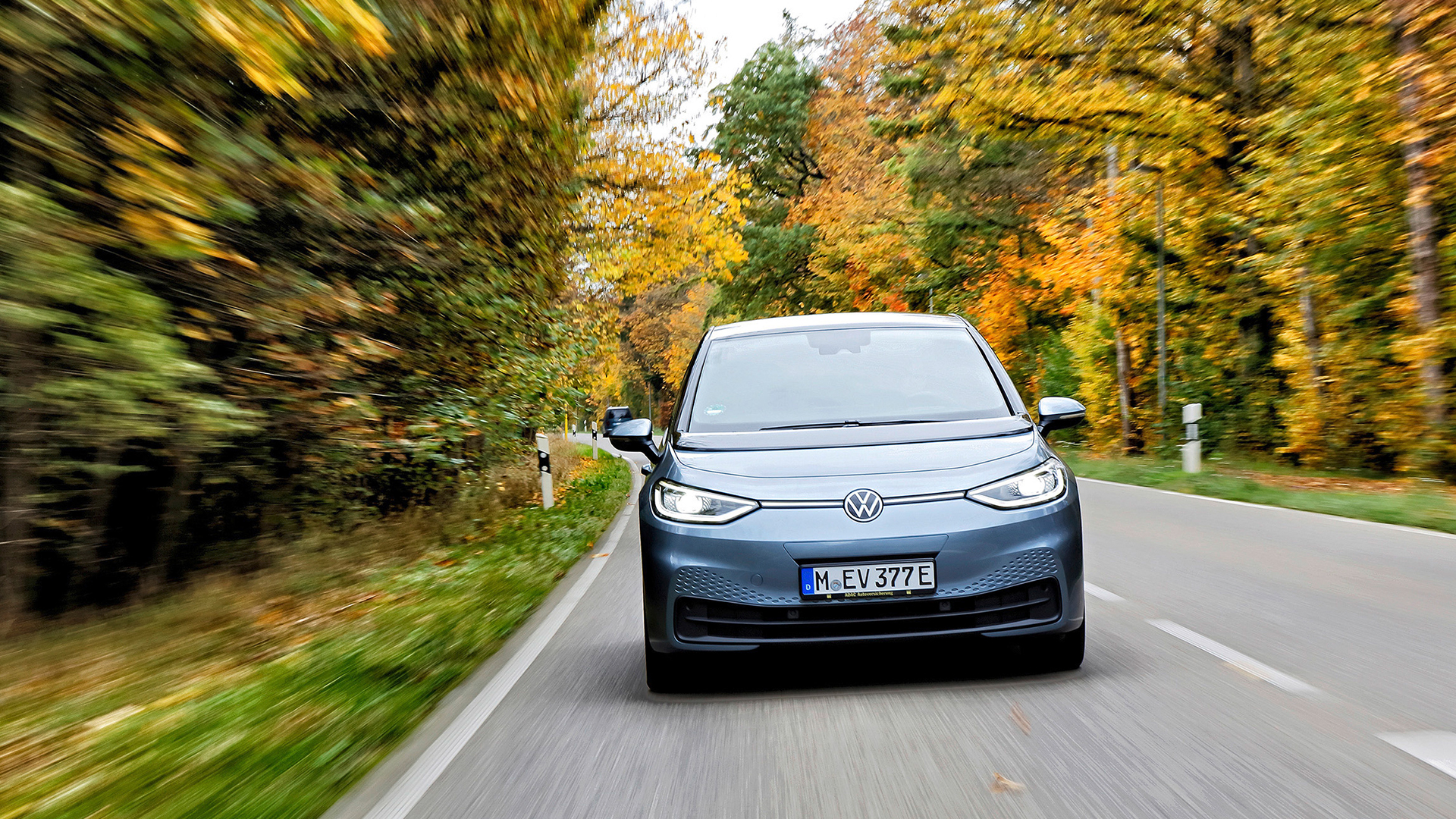Europe’s largest motoring club tested how much range one popular EV lost over 4 years and almost 110,000 miles – and it’s way less than you’d think
Those used EVs feel more like a bargain than ever

- The German Automobile Club has published results of a four-year test
- A Volkswagen ID 3 Pro S Tour was used as the subject
- Its battery degradation after 107,000 miles surprised all involved
Europe’s largest automobile association, the German Automobile Club (ADAC), has conducted a four-year experiment on one of Volkswagen’s most popular small EVs, subjecting it to more than 25,000 miles of driving per year and analyzing the effects on its battery packs.
The automobile association took delivery of the 77kWh VW ID 3 Pro S Tour in May of 2021, and has since recruited various drivers to cover in excess of 100,000 miles over a four-year period. All the while, its battery state of health was meticulously checked by the Bavarian Test and Technology Centre.
Volkswagen guarantees that the battery of its ID 3 has at least 70% of its original net capacity after eight years of operation or 160,000 kilometers (around 99,400 miles) of driving, but this example still boasted a 91% net capacity after four years and 107,000 miles, meaning it was well within a healthy range that wouldn’t require a replacement battery pack under warranty.
In fact, the calculations would mean this ID 3 lost just eight miles of its claimed max range of 336 miles , despite rapid charging stations being used 40% of the time during the test period.
What’s more, the ADAC said the EV was often charged to 100% capacity and left for several days before being driven again – most manufacturers recommend only charging to 80% and leaving the battery capacity depleted if the vehicle is to be sat for a number of days, but the ADAC wanted this to be a real-world test that mimicked the behavior of typical owners.
The only thing the German automobile association found was that the ID 3 only managed around 250 miles of range during highway driving, as opposed to the official WLTP range of 326 miles. It also pointed out that several over-the-air updates were applied by VW during the time, which fixed a number of bugs and increased charging capacity to up to 170kW.
VW also stated that the updates had a positive effect on consumption and the range. It claimed the new software significantly improved power consumption over short distances and in winter temperatures from 0 to 5C (32 to 41F).
Sign up for breaking news, reviews, opinion, top tech deals, and more.
Analysis: EVs get better (and greener) the older they get

The data from this extensive real-world EV analysis seems to back up a number of recent studies that show electric vehicle battery degradation is often overestimated, which could be putting off potential buyers and causing residual values to tank.
A Swedish car broker recently found that the readily-available battery Sate of Health (SoH) reports of well over 1,000 used EVs revealed that both pure electric and plug-in hybrid battery packs retain over 90% of their capacity, even after being subjected to high mileage and plenty of rapid charging.
UK leasing company Arval also found an average battery health level of 93% in its own studies, concluding that even after 124,000 miles, the average capacity remained close to 90%.
For many used EVs, this means the claimed range only drops by a handful of miles, while charging speeds and efficiencies remain largely unchanged.
With far fewer complex and mechanical components to go wrong, electric vehicles are increasingly looking like an affordable and reliable second-hand purchase.
This is particularly pertinent given that reports suggest electric vehicles don't repay their carbon debt to society until after 13,500 miles or around two years of ownership due to the energy intensive nature of EV production. Only at this point do they become a 'greener' option than their gas-guzzling alternatives.
Put simply, electric vehicles become more environmentally-friendly the longer they are owned and run, especially if they are regularly charged off-peak, when excess renewable energy is often offered by energy providers.
Add into the mix the ability to recycle a large percentage of a battery pack at the end of its useful life, and the EV makes a compelling case for itself, even in its twilight years.
Follow TechRadar on Google News and add us as a preferred source to get our expert news, reviews, and opinion in your feeds. Make sure to click the Follow button!
And of course you can also follow TechRadar on TikTok for news, reviews, unboxings in video form, and get regular updates from us on WhatsApp too.

Leon has been navigating a world where automotive and tech collide for almost 20 years, reporting on everything from in-car entertainment to robotised manufacturing plants. Currently, EVs are the focus of his attentions, but give it a few years and it will be electric vertical take-off and landing craft. Outside of work hours, he can be found tinkering with distinctly analogue motorcycles, because electric motors are no replacement for an old Honda inline four.
You must confirm your public display name before commenting
Please logout and then login again, you will then be prompted to enter your display name.